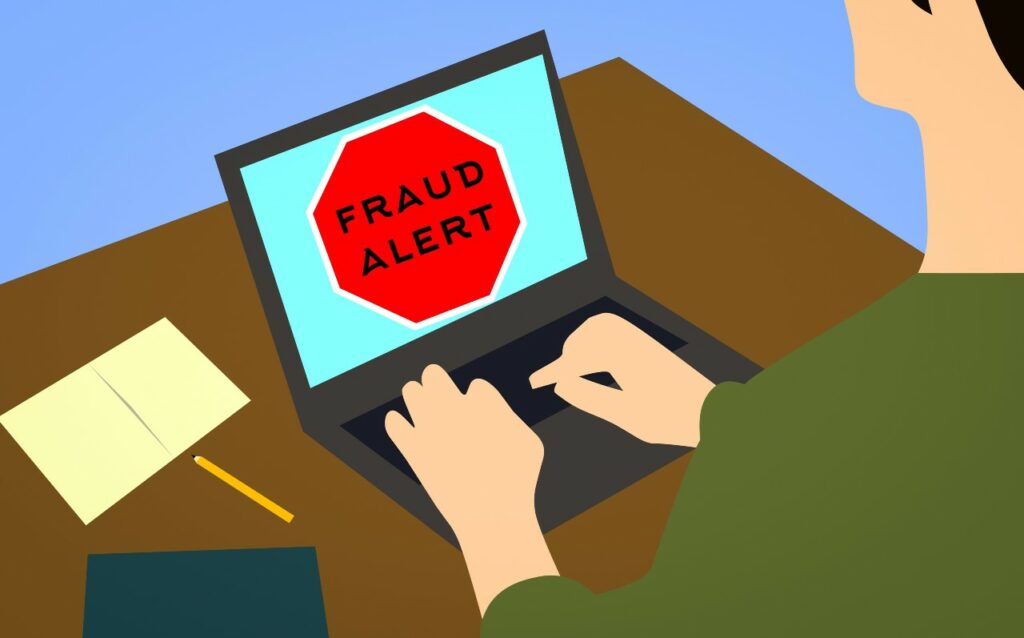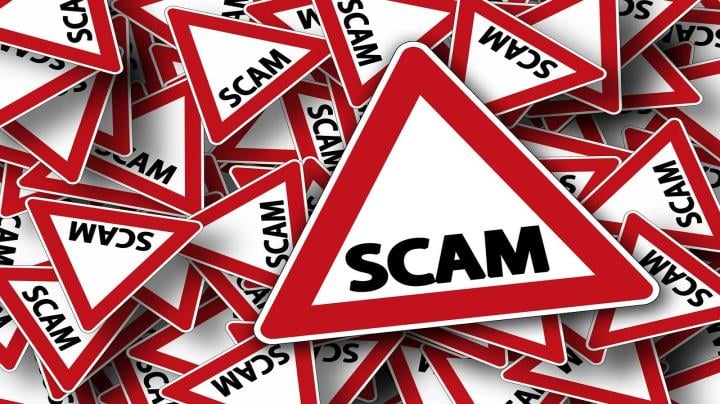Us9514901185421 – Explore For All Details!

In the vast internet landscape, where convenience meets vulnerability, scams, and phishing attempts have become a prevalent concern for online users.
US9514901185421 is linked to a phishing scam using fake USPS emails to trick users into revealing personal information. Be cautious and avoid engaging with such messages.
This article aims to shed light on the intricacies of the US9514901185421 scam, providing insights into its modus operandi, red flags to watch out for, and essential tips to stay safe online.
Table of Contents:
Unmasking The US9514901185421 Scam – Uncover The Truth Here!
The US9514901185421 scam typically manifests as an email or text message claiming to be from USPS, featuring a tracking number (US9514901185421) and asserting that the recipient’s package is halted.

The fraudulent communication insists on a payment to resume the delivery process, urging users to click on a provided link. However, this seemingly innocuous link redirects unsuspecting victims to a fake USPS website designed with one malicious intent – to harvest personal and financial information.
The nefarious us9514901185421 scam unfolds through deceptive emails or text messages masquerading as official USPS correspondence. As the bearer of inconvenient news, the communication claims a package delay, citing the tracking number US9514901185421.
To add a sense of urgency, recipients are informed that payment is essential to expedite the stalled delivery process. The ploy hinges on manipulating unsuspecting users into clicking on a seemingly harmless link in the message.
Once the recipients succumb to the persuasive tactics and click on the link, they unwittingly find themselves on a counterfeit USPS website. Crafted with precision to mimic the legitimate platform, this deceptive site operates with a singular malicious agenda – to harvest sensitive personal and financial information.
Read Also: Ungd2l – Your Ultimate Guide To Modern Learning!
Recognizing The Red Flags – Click for Essential Information!
1. Generic Language:
To appear legitimate, scam emails frequently resort to generic greetings like “Dear customer,” neglecting personalization by addressing recipients by name.
This lack of individualization is a red flag, signaling potential phishing attempts where cybercriminals aim to cast a wide net, targeting a broader audience with impersonal communication.
2. Unusual Urgency:
Fraudulent messages create a false sense of urgency, pressuring recipients to act quickly. Phishing attempts often exploit a false sense of urgency, coercing recipients into swift actions.
These fraudulent messages play on the urgency card, pressuring individuals to act hastily without due consideration. Recognizing and questioning such unusual urgency can be pivotal in thwarting potential scams and maintaining online security.
3. Suspicious Links:
Be cautious of links in emails. Clicking the provided link in this scam leads to a fraudulent USPS site. Please exercise caution when encountering links in emails, as they can be a potential avenue for scams.
It’s imperative to scrutinize and verify links thoroughly to safeguard against falling prey to phishing attempts, ensuring online interaction is done on secure and legitimate platforms.
4. Unsolicited Requests for Payment:
Legitimate companies, including USPS, do not request payments or personal information through email. Stay wary of unsolicited requests for payment in emails, as legitimate companies, including USPS, do not initiate such transactions through this medium.
It’s essential to adhere to the principle that reputable organizations typically employ secure channels and avoid sharing sensitive information in response to unsolicited email requests, ensuring the safety of personal and financial details.
Understanding The Scammer’s Tactics – Access More With A Single Click!
Scammers play on human tendencies and fears, exploiting individuals’ trust in well-known entities like USPS. The scam email often follows a pattern claiming that a package is stalled, awaiting payment for resumption, and providing a convenient link for users to make the supposed payment.

By preying on the recipients’ curiosity or concern about a halted delivery, scammers aim to elicit impulsive reactions that compromise personal information. Scammers strategically leverage human tendencies and fears, capitalizing on people’s inherent trust in recognized entities like USPS.
The scam email meticulously follows a familiar pattern, asserting a package delay and demanding payment for its swift resumption. She is accompanied by a convenient link for users to make the alleged payment.
By exploiting recipients’ curiosity or anxiety regarding a halted delivery, scammers seek impulsive responses that inadvertently compromise personal information. This underscores the importance of recognizing these tactics and maintaining a vigilant stance against such deceptive maneuvers.
Scammers employ cunning strategies by capitalizing on human tendencies and fears, exploiting the implicit trust individuals place in well-established entities like USPS.
The orchestrated scam email meticulously follows a predictable pattern, creating a sense of urgency around a purported package delay and demanding prompt payment for its resumption.
Recognizing and understanding these manipulative tactics is crucial for individuals to bolster their defenses against falling victim to such deceptive ploys, emphasizing the need for heightened awareness and skepticism in the digital landscape.
Read Also: Komik Hisashiburi Ni Jikka Ni Kaettara Otouto Ga Ts Shiteta – Read Now!
How the US9514901185421 Scam Works? – Dive Deep Into The Information!
Upon clicking the provided link, victims are redirected to a fake USPS website meticulously crafted to mirror the authentic site. Here, users are prompted to enter sensitive information such as their name, address, and credit card details under the guise of completing the payment process.
The intricacies of the US9514901185421 scam unfold when recipients click the provided link, redirecting them to a counterfeit USPS website skillfully designed to replicate the authentic platform.
Once on this deceptive site, users are manipulated into entering sensitive details – including their name, address, and credit card information – masquerading as essential steps to finalize the payment process.
Unbeknownst to the victims, this seemingly innocuous interaction becomes difficult as scammers swiftly capture this information, leaving individuals vulnerable to identity theft, unauthorized purchases, and many other malicious activities.
In this sophisticated ploy, scammers exploit the trust associated with legitimate organizations, turning a routine action like checking a package status into a potential threat to personal security.
Understanding the mechanics of this scam is pivotal in empowering individuals to recognize and thwart such deceptive tactics, reinforcing the importance of cybersecurity measures and cautious online behavior.
Tips to Stay Safe Online – Click For Essential Information!
- Vet Unknown Entities: Research the sender’s legitimacy through state or local consumer protection agencies and the Better Business Bureau (BBB) before engaging in online transactions.
- Guard Personal Information: Refrain from sharing codes, passwords, or personal information unless the recipient’s identity is inevitable.
- Verify Urgent Requests: Be skeptical of urgent messages requesting immediate action. Verify the legitimacy of the sender before responding.
- Think Before Clicking: Exercise caution with emails or texts that appear suspicious. Avoid opening attachments or clicking on links unless certain of their safety.
- Stay Informed: Regularly stay updated on current cyber threats by visiting reputable websites dedicated to cybersecurity.
What To Do If Scammed? – Access The details Instantly!
1. Cease Contact with Scammers:
Cease all communication with the scammer immediately. Refrain from responding to emails, messages, or letters.
2. Secure Finances:
Report compromised financial information to the relevant financial institutions promptly. Update your passwords to thwart any additional unauthorized access.
3. Check Computer Security:
Ensure the computer is free from malware. Update antivirus software and seek professional assistance if necessary.

4. Report the Scam:
Reporting the scam to authorities contributes to the protection of others. Contact local law enforcement and the Federal Trade Commission (FTC).
Read Also: Babajitone.Com Blogging – Navigating The Digital Landscape!
FAQs:
1. What is the us9514901185421 scam?
The us9514901185421 scam is a phishing attempt through fake USPS emails or texts using the tracking number (us9514901185421). It falsely claims the recipient’s package is stopped, urging a payment to restart the delivery.
2. What should I do if I receive such a message?
If you receive an email or text claiming to be from USPS with the tracking number us9514901185421, do not click on any links or provide any personal information. USPS does not request payments or sensitive information via email. Delete the message and report it.
3. What should I do if I’ve already clicked on the link?
If you’ve clicked on the link, run a thorough malware scan on your device using reputable antivirus software. Additionally, monitor your accounts for unusual activity and consider updating passwords for added security.
4. Can I report the us9514901185421 scam?
You can report phishing attempts to the Federal Trade Commission (FTC) using their online complaint assistant. This helps authorities track and combat cyber threats.
5. How can I stay informed about potential scams?
Stay informed by regularly checking official sources, such as the USPS website or relevant cybersecurity agencies. Be cautious, follow basic online safety practices, and remain skeptical of unsolicited messages requesting personal information.
Conclusion:
Stay vigilant against the us9514901185421 scam by recognizing phishing signs and adopting secure online habits. Protect your personal information to build a resilient defense against evolving digital threats.
Read Also:



